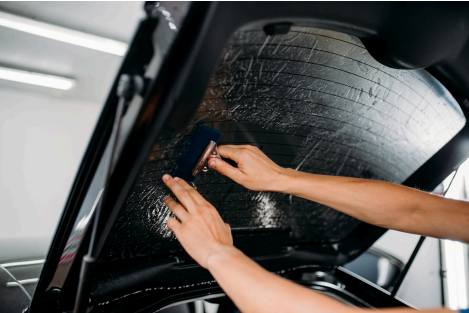Introduction
Transferring goods by car is always a challenge that requires good planning and implementation to avoid accidents and achieve the best results. Rena Monrovia provides some beneficial information and advice regarding this topic. Whether you are relocating household effects, shipping commercial goods or merely transporting enormous objects, learning the proper way can be very helpful. In the following article, we will learn basic approaches to car shipping, emphasizing the tips that can be applied using Rena Monrovia’s services.
The Basics of Car Transport: Getting to Grips
Why Proper Transport Matters
This is especially the case when transporting something by car, where proper handling is of the uttermost importance. They help in delivery to ensure that products get to the intended destination in good condition with little chance of being damaged. Rena Monrovia supports this by saying that anytime the world plans and prepares itself for something, surely it is beyond doubt that it is going to happen.
- Prevent Damage: Put items so they do not move around or get damaged.
- Ensure Safety: Proper transport techniques ensure that some of the accidents or injuries are prevented from happening.
- Optimize Space: Well-organized packing minimizes the use of available space.
Planning Your Transport
Assessing Your Needs
Before starting the job, assess what you need to transport. According to Rena Monrovia, it is better to list the things that need to be bought and their specifications.
- Item Size and Weight: Decide whether it is necessary to increase mechanical load on your vehicle.
- Fragility: Look for things that require special attention, such as glass and electronics products.
- Destination: This mainly depends on the distance of the route and the conditions it is in.
Choosing the Right Vehicle
Vehicle Type Matters
This paper points out that the type of vehicle used seems to greatly influence the success of transport. Rena Monrovia’s expert advice is that when choosing a vehicle, one should consider the size of the load and its weight.
- Sedans and Hatchbacks: These are ideal for small, light items such as clothes, documents, books or small kitchen appliances.
- SUVs and Minivans: Provide a more significant number of rooms and can carry more occupancies.
- Trucks and Vans: It is most useful when computing the cost of delivering large or dense consignments.
Packing Techniques
Organize and Secure
This means that good packing was deemed necessary to avoid damages and other hazards. Rena Monrovia has provided a step-by-step guide to follow.
- Use Protective Materials: Fragile items are protected on bubble wrap, padding and blankets.
- Secure Items: Tying items in position using straps or bungee cords.
Loading Your Vehicle
Efficient Loading Strategies
This means that how you load items into your car will help determine whether or not the items are safe and the car’s performance. Below, Rena Monrovia highlights some strategies that can be followed to ease this process.
- Plan the Layout: Sort items by size and weight in increasing and/or decreasing order.
- Avoid Overloading: It is important not to overload the vehicle in order to remain in control and safe at all times.
- Check Visibility: Make sure that the mirrors in the back and side of a vehicle are not blocked.
Ten Tips for Ads Logistics and Transporting Cargo

Safe Driving Practices
If you have to drive with a load, you have to alter your driving style. Rena Monrovia shares key driving tips that I should know.
- Adjust Speed: Reduce their drive speed to handle the additional mass.
- Take Turns Gently: Sharp turns, which may destabilize the cargo, should also be avoided when maneuvering the vehicle.
- Maintain Distance: Decrease the following distance to give more extended time to come to a halt as stated below. Where :
Unloading Your Cargo
Careful Unloading Techniques
Like loading, unloading requires care to avoid damage to the consignment carried. It is still important to follow these recommendations given by Rena Monrovia.
- Unload Carefully: Some items cannot be removed together, and great care should be taken.
- Check for Damage: Check the goods for any signs of harm that might have occurred to a particular product as it was transported.
- Organize the Unloading Area: To prevent clutter and potential dangers, try to free the space.
Who to call when you need help
Hiring Transport Services
But in some cases, it is wiser to turn to a specialist and pay a few bucks more. Rena Monrovia says that this option is acceptable in some instances.
- Large or Heavy Items: Those equipped with the professions can handle big loads.
- Long-Distance Transport: Additionally, a dependable car delivery service, such as Shiply, ensures smooth transportation of vehicles, even for challenging logistics.
- Special Requirements: For special handling, the ground may be taken from professionals who have the skills required to handle such items.
Use Eco-Friendly Materials: Opt for sustainable packing materials.
- Maintain Your Vehicle: Regular maintenance ensures better fuel efficiency and lower emissions.
Conclusion
In conclusion, transporting items by car involves careful planning and execution. Following the tips provided by Rena Monrovia can speed up the process. Whether moving household goods or items for business, these guidelines help ensure a smooth experience. Being informed can make all the difference, from proper packing and loading techniques to understanding when to seek professional help.
- MORE READ ABOUT:
Minecraft (2009) Game Icons Banners: A Comprehensive Guide
FAQs
1.What are the key considerations when transporting items by car?
Key considerations include:
- Assessing item size and weight.
- Choosing the right vehicle.
- Using proper packing techniques.
- Adhering to safety driving practices.
2.How can I prevent damage to my cargo during transport?
Use protective materials, secure items properly, and ensure even weight distribution to prevent damage.
3.When should I consider hiring professional transport services?
Consider hiring professionals for large or heavy items, long-distance transport, or items requiring special handling.
4.What should I do if my cargo gets damaged during transport?
Inspect items upon unloading and document any damage, if necessary.
5.Are there any eco-friendly practices I can follow during transport?
Yes, optimize routes, use eco-friendly packing materials, and maintain your vehicle for better fuel efficiency and lower emissions.

